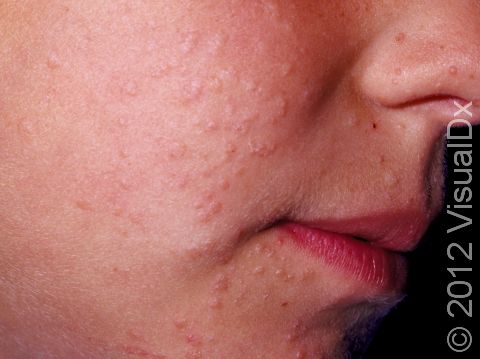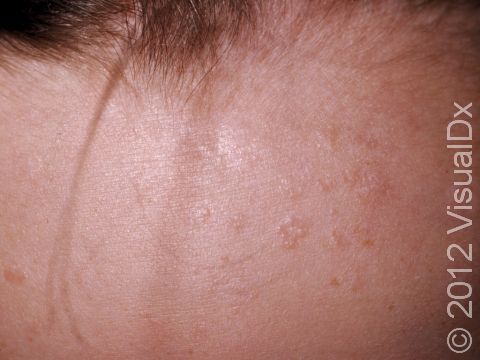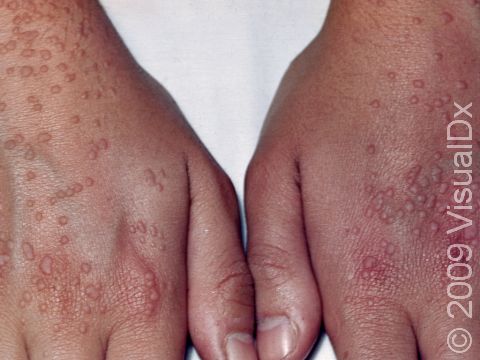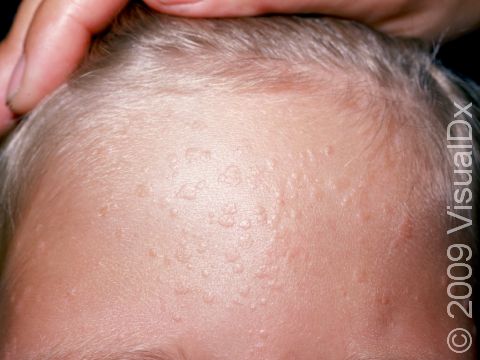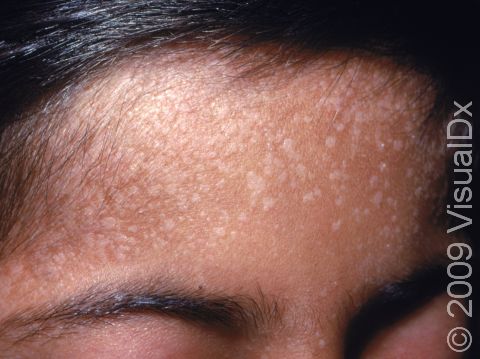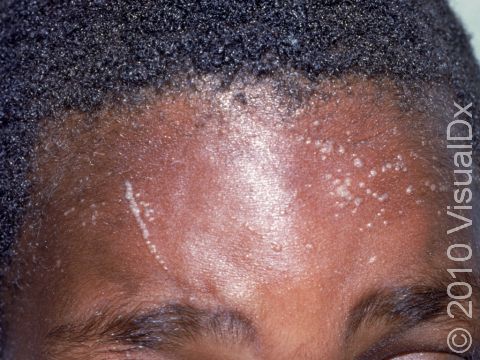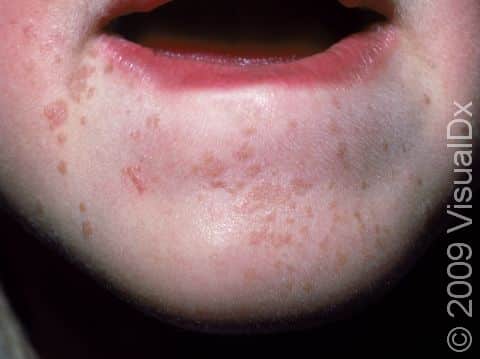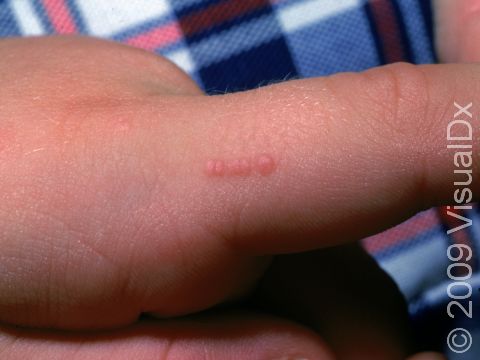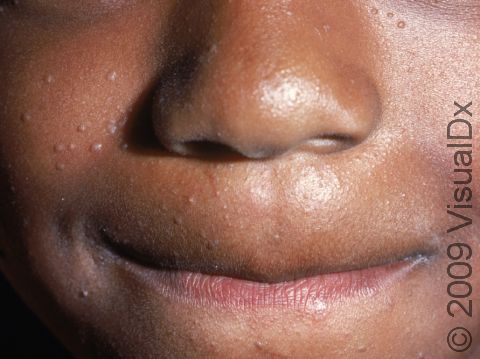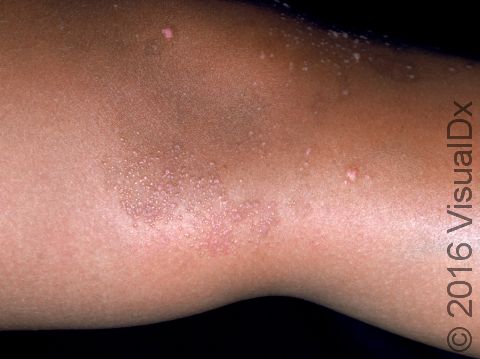Flat Wart
Warts are growths of the skin and inside the mouth that are caused by a virus known as the human papillomavirus (HPV). The virus causes thickening of the top skin layer. Flat warts tend to be small but can be plentiful. They are usually painless and go away on their own, sometimes taking a few months or up to a couple years to resolve.
Warts are usually acquired from person-to-person contact. The virus is not highly contagious but can cause an infection by entering through a small break in the skin. In the same way, warts can be spread to other places on your own body (autoinoculation). The virus can sometimes be transferred by touching an object used by an infected person.
Who's At Risk?
Warts can be found on people of any age, race / ethnicity, and sex. However, warts, including flat warts, are most commonly seen in children ages 12-16 years. In fact, it is estimated that 20% of schoolchildren have warts.
People with weakened immune systems (such as following chemotherapy therapy or an organ transplant) are more likely to have warts.
Signs & Symptoms
The most common locations for flat warts include the:
- Face, especially in children.
- Neck.
- Backs of the hands.
- Arms.
- Body locations that a person shaves.
Flat warts are very slightly raised, flat-topped, smooth, round or oval papules (small, solid bumps) ranging in size from 1 to 3 mm. In lighter skin colors, flat warts may be pink, skin-colored, or yellowish-brown. In darker skin colors, flat warts may be whitish, pink, purple, or brown. There are usually numerous flat warts, and they may appear in a line because of reinfection within the same person (autoinoculation), such as from scratching or shaving.
Self-Care Guidelines
Because warts can go away on their own, it is not necessary to treat all warts. In fact, treating warts may not always destroy them, nor will it necessarily keep other warts from appearing. Treatment can be painful, can cause scars, and may need to be repeated, so it should only be done in cases where the warts are highly bothersome or interfere with your child’s daily life.
- Over-the-counter wart removers have a high percentage of salicylic acid and work by dissolving away the layer of skin infected with the virus. This treatment needs to be used daily and can sometimes be irritating to unaffected skin around the warts.
- Duct tape applied daily to an affected area of the face can help remove warts. The tape should be very sticky and kept on for a few days at a time. (Note: the adhesive may irritate the sensitive skin of some children.)
- Over-the-counter freezing medications are available but have not been found to be very effective.
- Coupled with the above therapies, the wart should be soaked in warm water, and any loose skin should be removed every few days with a mild abrasive, such as a pumice stone.
- Household members should avoid sharing personal items such as towels.
Treatments
Once your child has been diagnosed with flat warts, their medical professional may try one or more of the following treatments:
- Freezing with liquid nitrogen (cryosurgery)
- Application of imiquimod or tretinoin, especially for flat warts on the face
- Burning with an electric needle (electrocautery)
Visit Urgency
Make an appointment with a medical professional if your child has:
- Painful or bleeding warts.
- Warts on their face.
- Rapidly spreading or multiplying warts.
- Warts that interfere with daily life or that are not responsive to self-care.
References
Bolognia J, Schaffer JV, Cerroni L. Dermatology. 4th ed. Philadelphia, PA: Elsevier; 2018.
James WD, Elston D, Treat JR, Rosenbach MA. Andrew’s Diseases of the Skin. 13th ed. Philadelphia, PA: Elsevier; 2019.
Kang S, Amagai M, Bruckner AL, et al. Fitzpatrick’s Dermatology. 9th ed. New York, NY: McGraw-Hill Education; 2019.
Paller A, Mancini A. Paller and Mancini: Hurwitz Clinical Pediatric Dermatology. 6th ed. St. Louis, MO: Elsevier; 2022.
Last modified on December 7th, 2023 at 3:06 pm

Not sure what to look for?
Try our new Rash and Skin Condition Finder
